Did you know that North America stands to lose over eight billion ash trees if current threats go unchecked? The emerald ash borer and other dangers are decimating our ash tree populations at an unprecedented rate. For homeowners, acting now with reliable ash tree preservation methods is not just about keeping your yard beautiful—it’s about protecting a vital piece of our ecological legacy.
In this comprehensive guide, you’ll uncover why every ash tree you save makes a difference, learn actionable steps and strategies, and discover how you can be part of a broader movement to protect ash trees for future generations. Don’t let your yard become the next casualty; get empowered to preserve, protect, and prosper.
Why Ash Tree Preservation Methods Are Critical in the Fight Against Emerging Threats
Ash tree preservation methods are now more crucial than ever . With invasive species like the emerald ash borer wreaking havoc across North America, every untreated ash tree is a potential loss to both your landscape and the tree population as a whole. Healthy ash trees offer cooling shade, habitat for wildlife, and aesthetic value to countless yards and public spaces. Yet, the rapid spread of pests and diseases is placing these benefits at risk. The impact goes beyond individual homeowners—communities, entire neighborhoods, and even major U.S. cities are facing the threat of losing significant parts of their tree canopies.
The urgency intensifies as climate change amplifies stress on ash tree populations. Unchecked, the cascading effects may include costly tree removal, reduced property values, and the loss of irreplaceable ecosystem services. Practical preservation methods—such as regular tree health inspections, timely chemical treatments, and community vigilance—are essential for disrupting these threats. By implementing proven strategies, you not only safeguard your own property but also contribute meaningfully to preserving North America’s ecological balance.
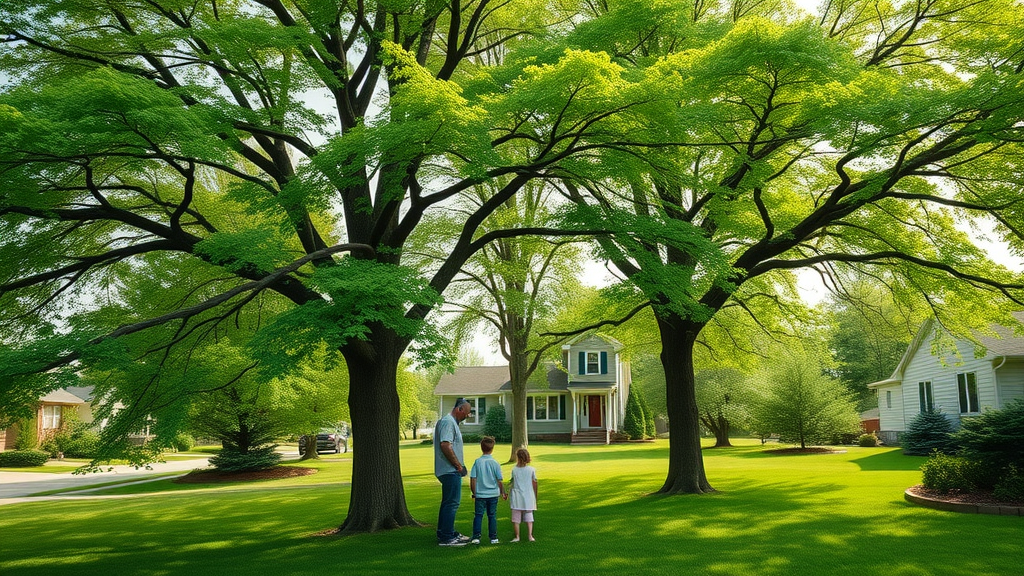
"Every ash tree lost is part of a legacy vanishing forever from North America’s forests."
Understanding Ash Trees: Key Facts and Their Role in North American Yards
Before diving into ash tree preservation methods, understanding the basics of ash trees is essential . In North America, ash trees (from the genus Fraxinus ) are staples in urban landscapes due to their fast growth, broad canopy, and high tolerance for various climates. Notable species include the white ash, green ash, and black ash—each boasting unique features that make them a valued part of city parks, yards, and forests.
Ash trees stand out with their compound leaves, diamond-patterned bark, and typically opposite branching. Their ecological significance is immense: ash trees support native insects, provide nesting for birds, and their fallen leaves enrich soil microbiota. The ability of ash trees to transport water and nutrients efficiently fosters their success in both wild and cultivated environments. For homeowners, preserving these species means maintaining the beauty and biodiversity that enhance property values and community well-being.
Ash trees: notable species and regional distribution
Ecological significance for North America
Common visual characteristics of ash trees
Ash Tree Species Most Frequently Found in Urban Landscapes
Different ash tree species thrive in neighborhoods and parks throughout North America. The white ash (Fraxinus americana) is especially prevalent in the eastern United States, known for its tall stature and vivid fall foliage. Green ash (Fraxinus pennsylvanica) has a broader geographical range, commonly found in both urban and riparian areas thanks to its adaptability and resilience. The black ash and blue ash, while less common, are also important contributors to regional tree populations, offering unique environmental benefits and distinct aesthetic qualities.
The resilience, disease resistance, and preferred conditions for each species vary, dictating the unique preservation approaches required. Understanding your tree species is the first step in determining the optimal ash tree preservation methods for your yard, as some are naturally more tolerant of pests, drought, or fluctuating temperatures. Choosing the right preservation strategy ensures healthier, longer-lived trees that can withstand or recover rapidly from environmental pressures.
Comparison of Common Ash Tree Species, Resistance, and Growing Conditions | ||
Tree Species |
Resistance Level |
Ideal Growing Conditions |
|---|---|---|
White Ash |
Moderate (susceptible to emerald ash borer) |
Well-drained, rich soils; full sun to partial shade |
Green Ash |
Low to moderate (high vulnerability to pests) |
Wide range; tolerates wet and dry sites, full sun |
Black Ash |
Low (vulnerable to pests, especially in wetlands) |
Moist, swampy soils; partial sun |
Blue Ash |
High (some natural pest resistance) |
Limestone soils; well-drained, full sun |
Identifying Threats to Ash Trees: Emerald Ash Borer and Other Perils
Among all threats facing North American ash trees, few are as devastating as the emerald ash borer (EAB). Rapid infestations by this invasive insect have led to steep declines in ash tree populations, inflicting billions of dollars in damage and reshaping woodland ecosystems. However, biotic stresses such as fungi, cankers, and even abiotic factors like extreme weather can also tip the scales against healthy tree populations. Understanding these hazards is crucial to implementing the most effective ash tree preservation methods and protecting ash trees in your landscape.
Being able to spot early signs of trouble can mean the difference between a manageable situation and a landscape-altering crisis. Regular monitoring, awareness of regional pest outbreaks, and education about human impacts—such as improper pruning or soil compaction—equip homeowners to intervene promptly. Effective protection requires a combination of vigilance, expertise, and proactive steps that integrate the best available scientific guidelines, often in partnership with organizations like the Department of Agriculture and local extensions.
Emerald Ash Borer: The Most Destructive Ash Tree Pest
Ash borer as an invasive threat
History and spread of emerald ash borer in North America
Spectacular increase in threat since its discovery
The emerald ash borer (Agrilus planipennis) has rapidly become the single greatest threat to ash trees in North America. Identified first in the United States near Detroit in 2002, the beetle has spread throughout the Midwest, East Coast, and into Canada, killing millions of ash trees along the way. The ash borer larvae burrow under the bark, disrupting the ability of trees to transport water and nutrients, resulting in canopy dieback and death within a few years of infestation. Communities across the continent have incurred tremendous costs in tree removal and lost ecosystem services as a direct result.
Part of the challenge lies in the beetle’s stealthy invasion; early infestations are hard to detect, as symptoms often emerge only after extensive internal damage. Confirmed infestations frequently lead to the declaration of quarantine zones to prevent movement of potentially infested wood. Homeowners play a pivotal role in early detection and containment—by observing tree health, reporting new outbreaks, and following best practices for firewood and yard debris management. Adopting the right ash tree preservation methods, especially in early stages, can prevent devastating losses and help manage the emerald ash borer threat over the long term.
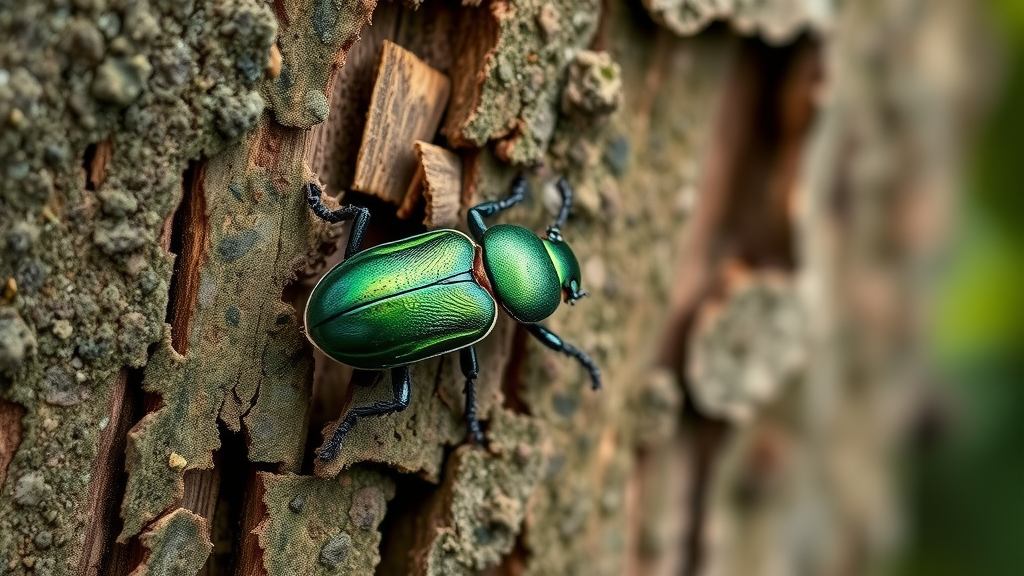
Other Common Threats: Diseases, Weather, and Human Impact
While the emerald ash borer garners headlines, ash trees face additional dangers that threaten their survival. Fungal pathogens such as ash yellows and verticillium wilt can weaken or kill trees, often moving through root systems or water movement, making control challenging in dense urban areas. Extreme weather events—drought, flooding, and high winds—exacerbate stress, rendering trees more susceptible to pests and diseases. As climate change progresses, the unpredictability of these events increases, impacting the ability of tree species to adapt and thrive.
Human activities, including improper pruning, lawn treatments that leach into tree root zones, and soil compaction from heavy equipment or foot traffic, can further undermine ash tree health. Across the United States and especially in metropolitan zones, these factors combine to accelerate decline. Mitigation strategies—like aerating the soil, avoiding excessive mulching, and consulting a certified arborist—are vital. Protecting ash trees requires a holistic approach, integrating ash tree preservation methods that address both biological and physical stressors, directly contributing to the longevity and vitality of ash tree populations.
"The Minnesota Department of Agriculture reports millions of ash trees at risk in the coming decade due to invasive species."
Core Ash Tree Preservation Methods for Homeowners
Homeowners are on the front lines of ash tree preservation. Proactive care not only helps in protecting ash trees from threats like the emerald ash borer but also extends the life and enhances the value of these iconic trees. Leading preservation methods blend preventive and responsive techniques, each with specific benefits and situational best uses. Implementing a comprehensive strategy is essential to ensure your yard—and by extension, your neighborhood—remains lush and vibrant, rather than scarred by declining or removed trees.
Protecting ash through routine health checks
Application of preventive treatments against emerald ash borers
Optimal pruning techniques for longevity
Soil care and irrigation best practices
Regular health inspections are critical for catching the early stages of pest or disease problems before they become unmanageable. Preventive treatments, like trunk injection of systemic insecticides (e.g., emamectin benzoate), have shown strong efficacy in halting the progression of EAB infestation, especially when combined with proper timing and follow-up applications. Pruning should focus on removing dead or infested branches, improving air circulation, and maintaining natural form. Additionally, attention to soil health—by avoiding compaction, ensuring adequate moisture, and applying organic mulches—can make a significant difference in maintaining an ash tree’s resilience and rapid recovery from stress.
Chemical Applications for Emerald Ash Borer Control: Efficacy and Risks
The use of chemical treatments remains pivotal in areas under active threat from emerald ash borer infestations. Several systemic insecticides are available, including soil drench and trunk injection (notably using emamectin benzoate and imidacloprid). These chemicals, when applied correctly by licensed professionals, can provide multiple years of protection for treated ash trees. However, risks must be carefully managed—over-reliance or incorrect application can damage beneficial insects and soil organisms, and in some instances, may contribute to pesticide resistance in pest populations.
Department of Agriculture guidelines stress the importance of proper timing, correct dosage, and awareness of local environmental factors. Cost, efficacy, frequency of retreatment, and any advisories on water table contamination should all be thoroughly considered before proceeding with chemical options. Homeowners should always work with a certified arborist and reference up-to-date data to ensure the best preservation outcome for their property and the wider ecosystem.
Comparison of Ash Borer Chemical Controls | ||||
Compound |
Application Method |
Frequency |
Potential Risks |
Department of Agriculture Guidance |
|---|---|---|---|---|
Emamectin Benzoate |
Trunk injection |
Every 2-3 years |
Low risk when properly applied; non-target insects potential |
Recommended for moderate to severe EAB infestation areas |
Imidacloprid |
Soil drench, trunk injection |
Annually |
Bee toxicity, potential ground water movement |
Suitable for low to moderate risk trees |
Dinotefuran |
Bark spray |
Annually |
Potential surface runoff, bee toxicity |
Rapid action for newly infested trees |
Mechanical and Biological Approaches to Ash Tree Preservation
Use of bioinsecticides
Introduction of natural predators
Community-based integrated pest management strategies
Non-chemical methods play a vital role in integrated ash tree preservation strategies. Bioinsecticides harness naturally occurring substances or organisms to manage pest populations with fewer risks to pollinators and beneficial insects. For example, entomopathogenic fungi and neem oil are being trialed in several U.S. cities, showing promising results. Biological control efforts, notably introducing parasitic wasps that prey on emerald ash borer larvae, are gaining ground in government-led pilot programs.
Mechanical interventions—like removing heavily infested trees, timely tree removal of dead specimens, or bark peeling to expose and destroy insect eggs—can slow the spread of EAB and other pests. Homeowners, when collaborating through neighborhood associations or local initiatives, enhance the overall resilience of urban tree populations. The integration of mechanical, biological, and limited chemical methods creates a balanced defense system, reducing reliance on any single control technique and supporting community-wide ash tree preservation goals.
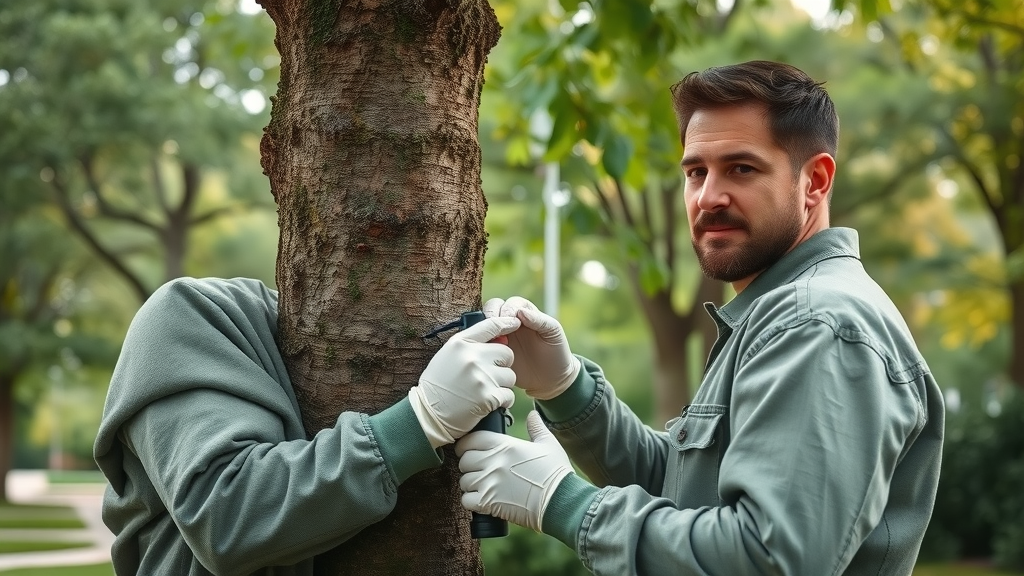
Protecting Ash Trees: Collaborating with the Department of Agriculture and Local Programs
Effective ash tree preservation relies not only on what you do in your yard, but also on participating in broader community and governmental programs. The Department of Agriculture at both state and federal levels—such as the Minnesota Department of Agriculture —offers resources, guidance, and collaborative initiatives that exponentially increase the odds of survival for local ash tree populations. These organizations spearhead early detection efforts, distribute best-practice protocols, and occasionally provide financial or logistical support to homeowners and municipalities battling emerald ash borer and other threats.
Homeowners can tap into several support avenues: educational workshops, cost-sharing grants for trunk injection, reporting infested or dying trees for swift removal, and enrolling significant or historic ash specimens in preservation registries. Ash tree registry programs create a network of monitored trees, supporting quick response during outbreak events. Early reporting—using digital networks maintained by agencies like the Department of Agriculture—empowers rapid mobilization, helping contain or eliminate emerging issues before they spread uncontrollably throughout North America.
Minnesota Department of Agriculture and Local Support Resources
Government grants for preservation
Ash tree registry programs
Reporting and early detection networks
The Minnesota Department of Agriculture is a national leader in integrated pest management and community engagement, offering comprehensive resources to help homeowners, arborists, and cities alike. Their grant programs support large-scale chemical or biological treatments in at-risk areas, while active registry programs facilitate close monitoring of valuable or unique ash tree populations. Homeowners are encouraged to report unusual symptoms or suspicious insect activity via online portals and hotlines, feeding crucial data into regional and national pest response systems.
This approach not only builds a sense of stewardship but also harnesses the collective power of the community in protecting ash trees for future generations. The collaborative spirit between homeowners and agricultural agencies is foundational to successful ash tree preservation methods and a resilient urban forest canopy.
Evaluating Cost-Effective Ash Tree Preservation Methods
Protecting ash trees does not always require a large financial outlay. Homeowners frequently weigh the cost of different preservation methods—choosing between chemical treatments, biological interventions, or, as a last resort, tree removal—to strike a balance between efficacy and household budget. Cost-effectiveness is ultimately a function of long-term planning: investing in routine treatments or monitoring can often eliminate the need for expensive emergency tree removal or large-scale landscape restoration down the line.
Table 1 below breaks down the key costs and projected long-term savings of popular methods. While initial outlays for trunk injection or biological treatments may seem high, they often translate to substantial savings compared to repeat tree replacement. Additionally, municipalities may offer cost-sharing or grant programs through their local Department of Agriculture to lighten the financial burden for proactive homeowners.
Cost Comparison of Ash Tree Preservation Strategies | |||
Preservation Method |
Initial Cost (per tree) |
Ongoing Cost/Frequency |
Long-Term Savings |
|---|---|---|---|
Chemical (Trunk Injection) |
$100–$300 |
Every 2–3 years |
High, avoids costly tree removal and replacement |
Biological Control |
$50–$200 |
Varies (often part of community efforts) |
Moderate; most effective when combined with other methods |
Mechanical (Pruning/Tree Removal) |
$100–$1,500 |
As needed |
Necessary if tree is infested, but can be costly for large mature trees |
"Investing in ash tree preservation methods now will save future generations from ecological loss."
Preventing the Spread: Best Practices for Homeowners in North America
Stopping the spread of ash tree pests and diseases requires every homeowner to follow a few straightforward but crucial practices. Stringent controls on firewood movement, proper disposal of tree debris, and community-focused awareness campaigns are pillars for building resilience across neighborhoods and entire regions. Protecting ash trees at the community level dramatically reduces the risk of reinfestation, secures ecosystem benefits for the United States and Canada, and minimizes costly interventions in the future.
Firewood movement restrictions
Proper ash tree debris disposal
Community awareness initiatives
Never transport ash firewood beyond local quarantined zones; doing so can unknowingly spread the emerald ash borer to unaffected areas. All ash debris—branches, leaves, and trunk sections—should be chipped, burned locally, or disposed of according to municipal guidelines. Participation in awareness initiatives, like distributing informational flyers or hosting neighborhood talks, is highly effective, ensuring that vigilance and informed decision-making are standard across the community. Together, these steps provide a sustainable defense for ash trees in North America and safeguard your yard for the future.

Video: Easy Steps to Save Your Ash Trees from Emerald Ash Borer
Sometimes, a visual explanation is the best way to start learning. Watch our quick video demonstration for an illustrated overview of hands-on ash tree preservation methods, including early detection, chemical application, and effective pruning. Empower yourself to take swift, practical action in your yard this season.
Quick Demonstration of Preventive Care Techniques
Learn how to check for early signs of emerald ash borer damage, apply preventive treatments, and perform optimistic yet critical pruning to maximize your ash trees’ vigor and block pest infestation. The video will walk you through safe practices and show you how to prepare for expert evaluation if needed.
How to Identify an Ash Tree at Risk: Action Steps for Early Detection
Signs and symptoms of emerald ash borer infestation
When to call an arborist for expert evaluation
Timely detection is the cornerstone of most successful ash tree preservation methods. Early symptoms of emerald ash borer infestation include thinning foliage, canopy dieback, D-shaped exit holes in bark, increased woodpecker activity, and vertical bark splitting. If you notice excessive bark shedding or localized dieback in the upper branches, your tree may already be under attack. Immediate response is essential to avoid complete loss or spread to neighboring trees. Call a certified arborist if you suspect an infestation or if routine health checks reveal subtle changes you can’t identify. Professionals can confirm EAB presence, recommend precise treatments (e.g., trunk injection), and help you structure a long-term care plan compliant with Department of Agriculture guidelines and local best practices.
Never ignore early warning signs—acting in time can mean the difference between a restored tree and an expensive, hazardous removal. Join local networks or contact your nearest extension office for help with monitoring and reporting unusual symptoms, ensuring your contribution to regional preservation efforts remains impactful and efficient.
Video: Real-Life Examples of Ash Tree Preservation Methods in Action
To inspire and motivate, our second featured video showcases real homeowners, arborists, and conservation leaders engaged in the daily fight to save ash trees. Witness practical application of chemical, biological, and mechanical strategies, and see how collaborative efforts yield visible results. Empower yourself by learning from those on the front lines of ash tree preservation.
Interviews with Arborists and Community Leaders
Hear firsthand accounts from certified arborists describing the latest technological breakthroughs in emerald ash borer control, as well as from city officials discussing community-based pest management programs. Understand the network of support available and the difference one person’s—or one neighborhood’s—dedication can make in sustaining ash tree populations across North America.
Ash Tree Success Stories: Communities Making a Difference
Notable recovery projects
Department of Agriculture tree planting campaigns
Tools and strategies fueling preservation
Across North America, a groundswell of action is reversing the tide of ash tree decline. Cities like Minneapolis and Cleveland have instituted ambitious replanting and chemical treatment campaigns, while rural counties have reintroduced native natural predators to slow emerald ash borer spread. The Department of Agriculture leads large-scale efforts through education, grant funding, and innovative research, making critical resources accessible to both professionals and volunteers.
Success is achieved through multifaceted approaches: incorporating ash trees into urban forest renewal plans, funding ongoing research into resistant tree species, and launching community workshops on pest identification and proper tree care. These stories testify that ash tree preservation methods, when widely applied and supported, restore hope—and preserve a living legacy—for generations to come.
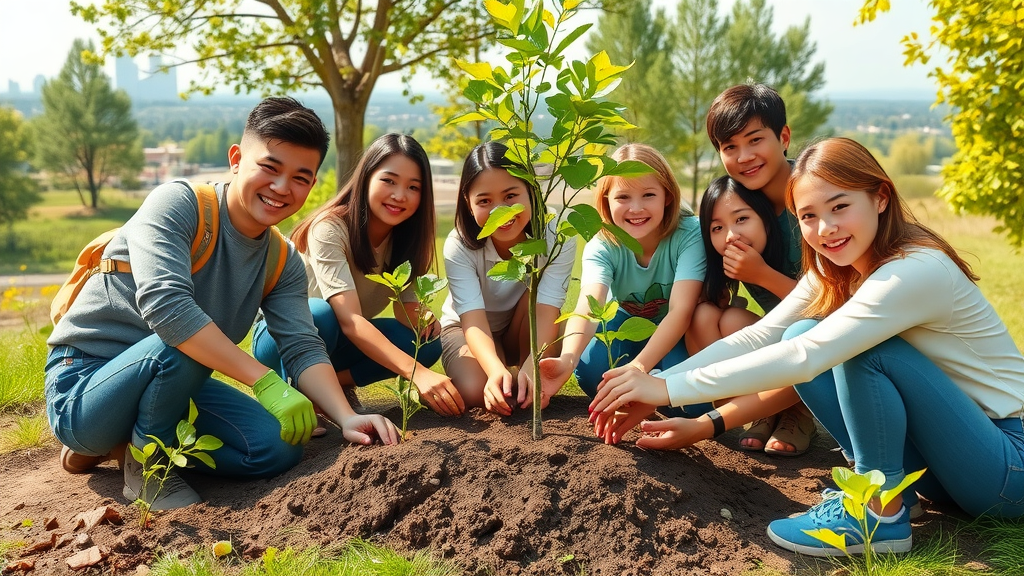
Expert Tips for Maintaining Ash Trees for Future Generations
Regular inspections and maintenance
Participating in statewide monitoring initiatives
Utilizing up-to-date department of agriculture guidelines
The longevity and vigor of your ash trees depend on steady attention and informed action. Schedule seasonal health assessments, especially during spring and late summer when pest activity peaks. Become involved in state or county-wide monitoring projects—these programs provide educational resources, facilitate faster detection of new threats, and enable coordinated preservation responses that secure benefits for your entire community. Always reference the latest Department of Agriculture best practices before applying pesticides, biological controls, or undertaking major pruning activities.
Don’t underestimate the positive impact of your commitment. Routine care and participation in broader support frameworks carve a durable path toward protecting ash trees for future generations, ensuring these majestic species continue to shape North American landscapes, culture, and habitats for many years ahead.

Frequently Asked Questions on Ash Tree Preservation Methods
What can I do to save my ash tree?
Regularly inspect your ash tree for early signs of emerald ash borer and other pests, such as canopy thinning or unusual bark shedding. Consult a certified arborist to evaluate tree health and administer preventive treatments like trunk injection or soil drench using approved insecticides. Adhering to Department of Agriculture guidelines and participating in local pest monitoring networks will bolster your preservation efforts and contribute to the health of neighboring trees as well.
How much does ash tree treatment cost?
The cost to treat an ash tree can vary based on location, tree size, and method. Trunk injections of emamectin benzoate typically cost between $100–$300 per tree every 2-3 years, while soil drench treatments may cost less but require more frequent application. Community cost-sharing programs or state grants may help offset these expenses, especially in regions heavily affected by emerald ash borer infestation.
Is my ash tree worth saving?
If your ash tree is healthy, structurally sound, and provides shade, habitat, or aesthetic value, preservation is often financially and ecologically worthwhile. However, trees already severely infested (showing 50% or more canopy loss) may have limited potential for recovery. Consult with a certified arborist to assess your specific tree and weigh the long-term benefits of treatment versus removal and replacement.
How are ash trees protected?
Ash trees are protected using a combination of chemical, mechanical, and biological strategies such as trunk injection, pruning of infested branches, and the introduction of natural predators like parasitic wasps. Collaboration with government agencies, implementation of firewood restrictions, and ongoing tree care are fundamental to maintaining healthy ash tree populations and preventing further emerald ash borer spread.
Comprehensive Answers to Your Ash Tree Concerns
If you have more specific or technical questions about ash tree preservation methods—such as regulations on pesticide use, selecting the right tree species for replanting, or understanding local quarantine protocols—reach out to your state’s Department of Agriculture or local extension office. These entities offer the most current research findings, practical advice, and community-based educational materials to ensure your preservation efforts are both effective and sustainable.
People Also Ask: Practical Solutions for Homeowners
What can I do to save my ash tree?
Monitor your ash tree for warning signs, avoid moving ash wood outside quarantine areas, and consult professionals for preventive chemical treatments at the earliest sign of emerald ash borer. Engage in community initiatives to help bolster your efforts and maintain a healthy tree canopy for everyone in your area.
How much does ash tree treatment cost?
Treatments typically range from $100 to $300 per tree for trunk injections every 2-3 years, and slightly less for soil drench approaches. Factor in potential discounts or grants from local or state agencies to help offset those costs.
Is my ash tree worth saving?
Generally, healthy, well-situated ash trees are worth the investment. If more than half of the canopy is missing or the tree is unstable, removal may be necessary for safety and ecological reasons. Always consult a certified arborist for personalized guidance.
How are ash trees protected?
Protection strategies include regular inspection, application of insecticides like emamectin benzoate, judicious pruning, and support from biological control measures. Community action and compliance with Department of Agriculture recommendations significantly increase preservation success.
Key Insights on Ash Tree Preservation Methods: What Every Homeowner Should Know
Early intervention is crucial against threats like the emerald ash borer
Combining chemical, biological, and community-based efforts yields the best results
Collaboration with department of agriculture enhances success
Routine maintenance ensures survival for future generations
Next Steps: Implementing Effective Ash Tree Preservation Methods to Secure Your Yard’s Future
Take action today—schedule a health inspection, join a community monitoring program, and equip yourself with up-to-date preservation methods for your ash trees. Your commitment now will ensure lasting shade and beauty for generations to come.
 Add Row
Add Row  Add
Add 



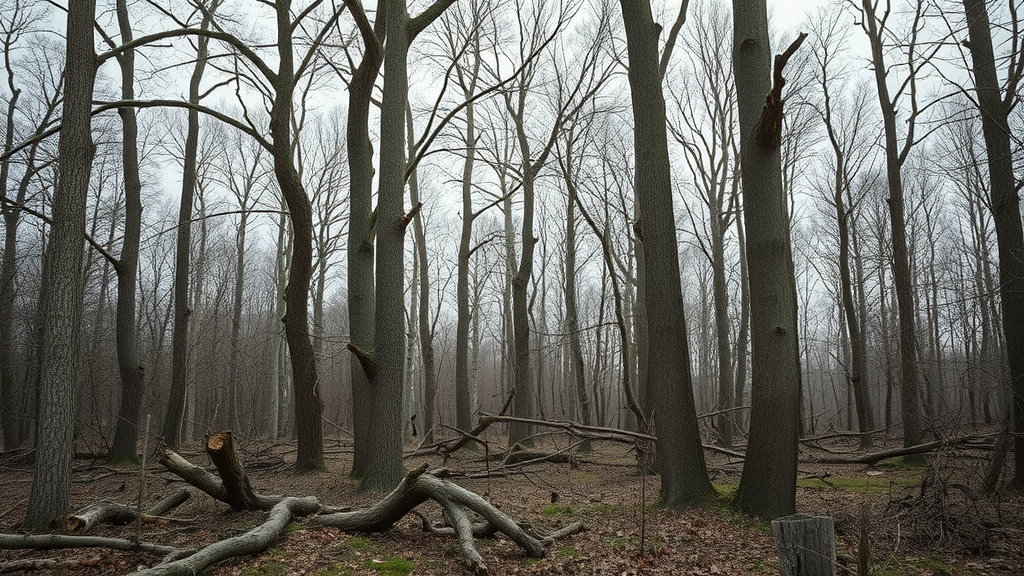
Write A Comment